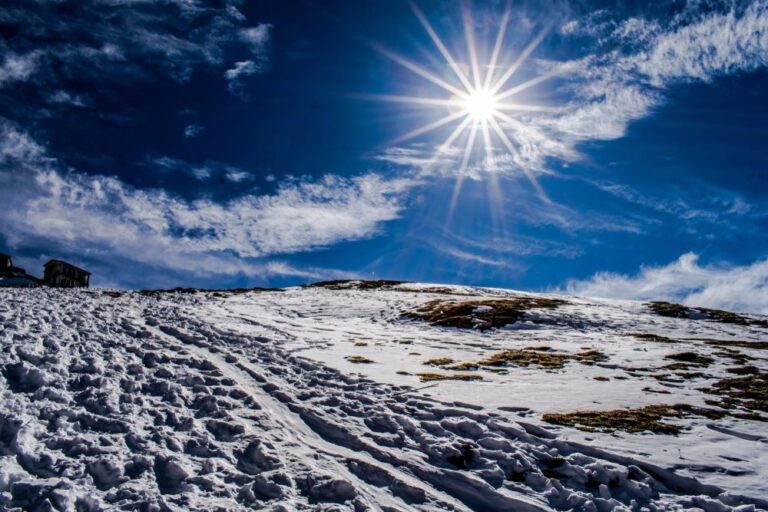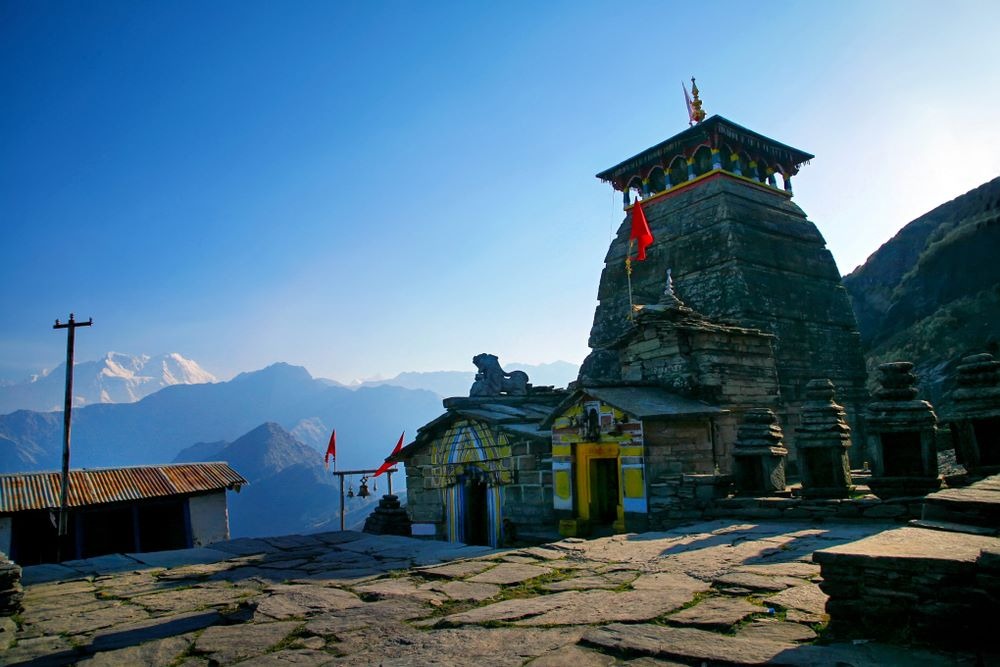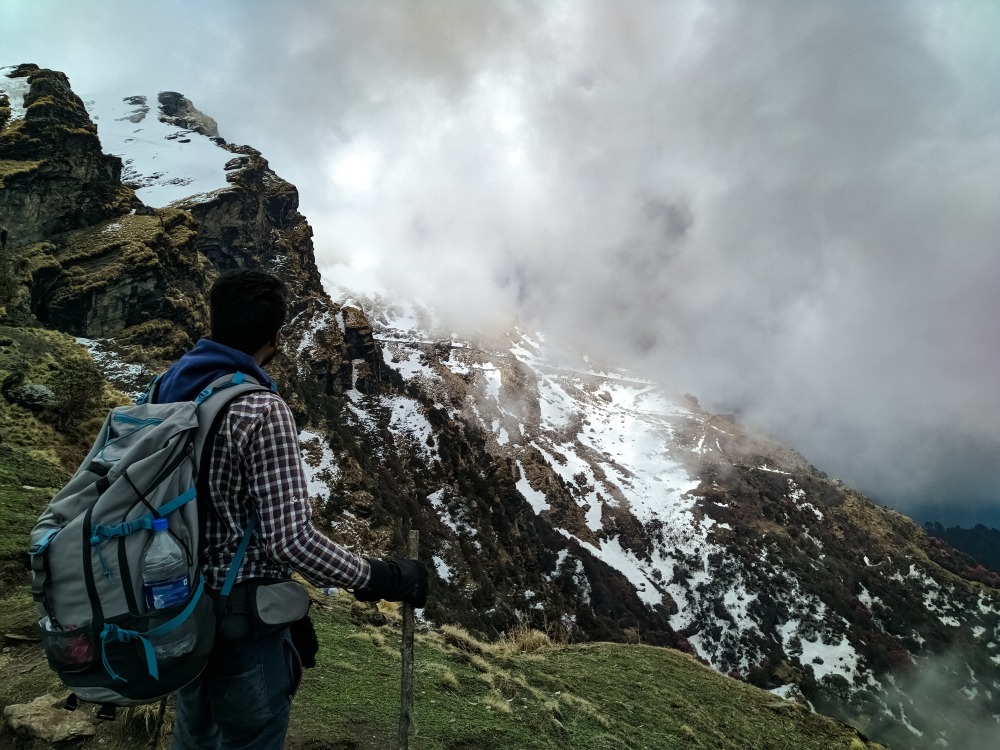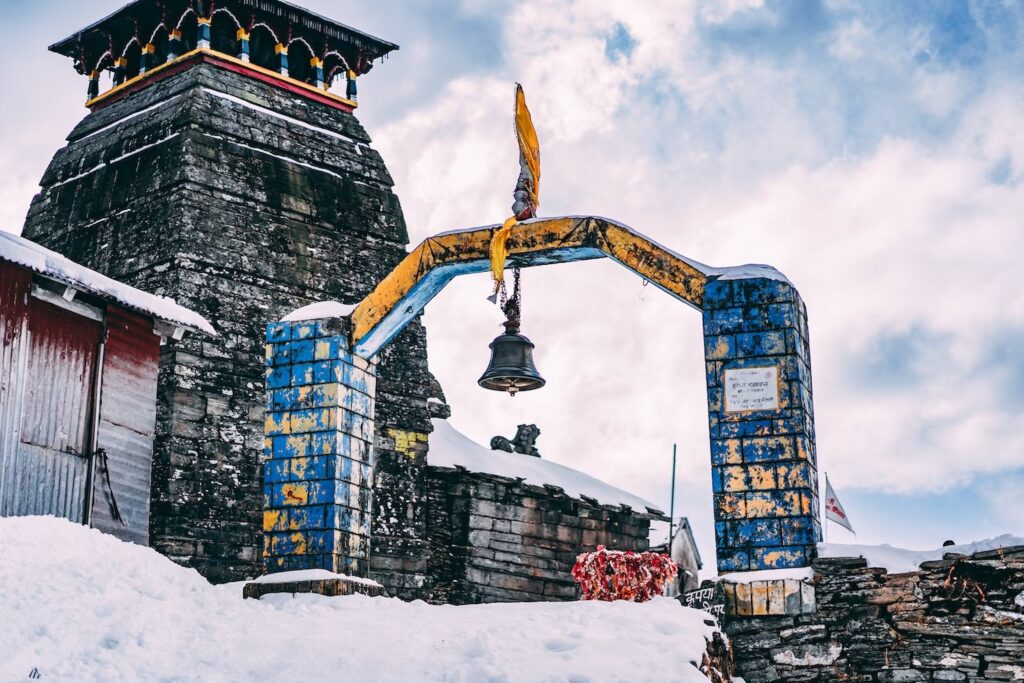
Contents
1. Let the Adventure Begin Of Chopta Tungnath Trek: Introduction
Welcome to the gateway of adventure – the Chopta Tungnath Trek! Prepare to be swept away by the magic of the Himalayas as we embark on a journey like no other. Lace up your boots, because we’re about to dive into the heart of nature’s grandeur!
Imagine waking up to the cool mountain air, surrounded by towering peaks and lush foliage that extends as far as the eye can see. This is the essence of the Chopta Tungnath Trek, where every step leads to a new adventure and every vista takes your breath away.
2. Unlocking the Mysteries of Chopta Tungnath Trek
Discovering Paradise

The Chopta Tungnath Trek, located in Uttarakhand’s Garhwal Himalayas, is a refuge for both nature lovers and adventure seekers. With its pristine beauty and serene ambiance, this trek offers a chance to escape the hustle and bustle of city life and reconnect with the natural world.
Trekking Tales
But the Chopta Tungnath Trek is more than just a walk in the woods. It’s a journey of self-discovery, a test of endurance, and a chance to forge lifelong memories. From navigating rugged trails to camping under the stars, every moment is a testament to the indomitable spirit of the human soul.
A Trek for All
One of the most remarkable aspects of the Chopta Tungnath Trek is its accessibility. While seasoned trekkers will relish the challenge of conquering its heights, beginners will find solace in its manageable terrain and breathtaking scenery. Whether you’re an adrenaline junkie or a nature enthusiast, there’s something for everyone on this epic adventure.
3. Timing is Everything: When to Conquer the Chopta Tungnath Trek
Seize the Moment
As with any adventure, timing is crucial when planning your trek to Chopta Tungnath. While the trek is open year-round, the best time to visit is during the months of April to June and September to November. During these periods, the weather is mild, the skies are clear, and the landscapes are adorned with vibrant colors, making for a truly unforgettable experience.
A Symphony of Seasons
Each season brings its own unique charm to the Chopta Tungnath Trek. In the springtime, the hills come alive with the vibrant colors of blooming flowers, while the autumn months offer a spectacle of golden hues as the leaves change color. Winter brings a blanket of snow, transforming the landscape into a winter wonderland, while summer offers respite from the heat with its cool mountain breezes. No matter when you choose to visit, you’re in for an adventure of a lifetime.
4. Your Journey Starts Here: Getting to Chopta
The Road Less Traveled

The journey to Chopta is an adventure in itself. Whether you’re traveling from nearby towns like Rishikesh or further afield, every road leads to Chopta, the gateway to the Himalayas. Along the way, you’ll be treated to breathtaking views of snow-capped peaks, winding rivers, and dense forests, setting the stage for the adventure that awaits.
From City to Sanctuary
For those coming from major cities like Delhi or Dehradun, the journey to Chopta offers a welcome escape from the hustle and bustle of urban life. As you leave behind the noise and pollution of the city, you’ll find yourself immersed in the tranquility of the mountains, with each passing mile bringing you closer to the heart of nature.
5. Where to Rest Your Weary Feet: Accommodation
Retreat Amongst the Mountains
After a day of trekking, nothing beats the comfort of a cozy accommodation nestled amidst the mountains. Chopta offers a range of options to suit every budget and preference, from quaint guesthouses and campsites to luxurious resorts and homestays. Whether you’re looking for a rustic retreat or a pampering paradise, you’ll find it all in Chopta.
A Home Away from Home
One of the highlights of staying in Chopta is the warm hospitality of its people. Whether you’re staying in a family-run guesthouse or a traditional homestay, you’ll be treated like a member of the family, with delicious home-cooked meals and cozy accommodations that make you feel right at home. So sit back, relax, and let the magic of Chopta work its charm on you.
6. Gear Up for Glory: Essential Packing Tips
Ready, Set, Trek!

Packing for a trek is an art form, requiring careful consideration of every item that goes into your backpack. From sturdy trekking shoes and weather-appropriate clothing to essential gear like a first-aid kit, water bottles, and snacks, every item plays a crucial role in ensuring a safe and enjoyable trekking experience.
Pack Light, Pack Right
When it comes to packing for the Chopta Tungnath Trek, less is definitely more. While it’s tempting to pack everything but the kitchen sink, remember that you’ll be carrying your backpack for hours on end, so it’s important to pack light and only bring the essentials. Stick to lightweight, quick-drying clothing that can be layered for warmth, and opt for compact, multipurpose gear whenever possible. And don’t forget to leave room in your pack for souvenirs – after all, you’ll want to bring back a piece of Chopta with you wherever you go.
7. A Trekker’s Dream: Day-wise Itinerary
Mapping Your Adventure
A well-planned itinerary is the key to a successful trek. Here’s a suggested day-wise itinerary for the Chopta Tungnath Trek:
Day 1: Arrival at Chopta
- Arrive at Chopta and adjust to the altitude.
- Explore the serene surroundings and prepare for the trek ahead.
Day 2: Chopta to Tungnath
- Begin the trek from Chopta to Tungnath, covering approximately 4-5 hours.
- Admire the breathtaking vistas and immerse yourself in nature’s beauty.
- Reach Tungnath and visit the ancient Tungnath Temple, dedicated to Lord Shiva.
Day 3: Tungnath to Chandrashila Summit
- Embark on an early morning trek to Chandrashila Summit.
- Witness the awe-inspiring sunrise over the Himalayas from the summit.
- Descend back to Chopta and conclude your trekking adventure.
Flexibility is Key
While it’s important to have a rough itinerary in place, it’s equally important to remain flexible and open to changes along the way. Whether it’s unexpected weather conditions, last-minute detours, or spontaneous side trips, the beauty of trekking lies in the unpredictability of the journey. So embrace the unknown, go with the flow, and let the mountains be your guide.
8. Mastering the Trails: Expert Trekking Tips
Trailblazing Wisdom
Trekking in the Himalayas requires more than just physical endurance – it requires mental fortitude, patience, and a deep respect for nature. Here are some expert trekking tips to help you conquer the trails with confidence:
- Stay Hydrated: Drink plenty of water to stay hydrated, especially at higher altitudes where dehydration can occur more rapidly.
- Take Breaks: Pace yourself and take regular stops to recover and regain your breath. Listen to your body and understand when to push yourself and when to relax.
- Follow Safety Guidelines: Stay on designated trails, avoid shortcuts, and always heed the advice of experienced guides and fellow trekkers.
Mind Over Mountain
Perhaps the most important tip for trekking in the Himalayas is to maintain a positive mindset. Whether you’re facing steep inclines, rocky terrain, or unpredictable weather, remember that every challenge is an opportunity for growth. Stay focused, stay determined, and above all, stay safe – and you’ll emerge from the mountains stronger, wiser, and more alive than ever before.
If you’re looking for a reliable company to organize your Chopta Tungnath Trek adventure, look no further than The Searching Souls. With years of experience in organizing treks and expeditions in the Himalayas, they are the perfect choice for those seeking a seamless and unforgettable trekking experience.
9. Safety First, Adventure Second: Safety Measures
Adventure Awaits… Safely
Trekking in the Himalayas is a thrilling experience, but safety must always come first. Here are some key safety factors to bear in mind.
- Acclimatization: Allow your body to acclimatize to the altitude by taking it slow and steady, especially if you’re not used to hiking at higher elevations.
- Emergency Contacts: Keep a list of emergency contacts handy, including local authorities, trekking agencies, and medical facilities in the area.
- Buddy System: Trek with a partner or in a group whenever possible, as there’s safety in numbers. Look out for each other and never leave anyone behind.
Knowledge is Power
Before setting out on your trek, take the time to familiarize yourself with the terrain, weather conditions, and potential hazards along the route. Stay informed, stay vigilant, and always err on the side of caution – after all, it’s better to be safe than sorry.
10. Capturing Memories: Photography Tips
Freeze the Moment
No trek is complete without a camera to capture the breathtaking beauty of the Himalayas. Here are some photography tips to help you capture the magic of Chopta Tungnath:
- Golden Hours: Make the most of the golden hours of sunrise and sunset, when the light is soft and the colors are vibrant.
- Scenic Vistas: Look for unique angles and perspectives to capture the grandeur of the Himalayan peaks against the backdrop of clear blue skies.
- Macro Shots: Don’t forget to zoom in on the smaller details, like colorful flowers, intricate patterns in the rocks, and playful wildlife along the trail.
The Power of Perspective
When it comes to photography, don’t be afraid to think outside the box and experiment with different styles and techniques. Whether it’s capturing the raw beauty of the landscape or the intimate moments shared between fellow trekkers, the key is to tell a story with your photos and evoke emotion in your audience. So grab your camera, unleash your creativity, and let the mountains be your muse.
11. Delving into Spiritual Depths: Tungnath Temple
A Spiritual Odyssey

No visit to Chopta Tungnath is complete without paying homage to the ancient Tungnath Temple, the highest Shiva temple in the world. Situated at an altitude of 3,680 meters above sea level, this sacred site is steeped in history, mythology, and spirituality, making it a must-visit destination for pilgrims and trekkers alike.
Pilgrimage of the Heart
For centuries, pilgrims from all walks of life have made the arduous journey to Tungnath in search of spiritual enlightenment and divine blessings. Whether you’re a devout believer or a curious traveler, a visit to Tungnath is sure to leave a lasting impression on your soul, inspiring you to seek deeper meaning and connection in your own life.
12. Wildlife Wonders: Encounters on the Trail
Nature’s Playground
One of the highlights of trekking in the Himalayas is the chance to encounter the rich biodiversity of the region. From rare birds and elusive mammals to colorful butterflies and exotic flora, every step brings you closer to nature’s wonders. Keep your eyes peeled and your camera ready for a chance to capture these magical moments on film.
Symphony of Life
As you trek through the dense forests and alpine meadows of Chopta Tungnath, you’ll bear witness to the intricate web of life that thrives in these rugged landscapes. Listen to the melodious chirping of birds, marvel at the graceful movements of deer and mountain goats, and breathe in the sweet fragrance of wildflowers as you immerse yourself in nature’s symphony.
13. Guardians of the Environment: Conservation
Preserving Paradise
As stewards of the environment, it’s our responsibility to protect the pristine beauty of Chopta Tungnath for future generations to enjoy. Here are some simple ways you can minimize your impact on the environment while trekking:
- Leave No Trace: Pack out everything you pack in, including trash, food wrappers, and other waste. Keep the trail cleaner than you found it.
- Respect Wildlife: Keep a safe distance from wildlife and refrain from feeding or disturbing them in any way. Remember, we’re visitors in their home.
- Stay on Designated Trails: Stick to established trails and avoid trampling on fragile vegetation or disturbing wildlife habitats.
A Call to Action
But conservation isn’t just about what we don’t do – it’s also about what we can do to make a positive difference in the world around us. Whether it’s participating in clean-up efforts, supporting local conservation initiatives, or simply spreading awareness about the importance of environmental stewardship, every action we take has the power to create lasting change. So let’s join hands and work together to preserve the natural wonders of Chopta Tungnath for generations to come.
14. The Journey’s End… or is it?
Farewell… or Until Next Time?
As our adventure draws to a close, we bid farewell to the majestic Himalayas with a mixture of sadness and gratitude. But remember, the journey never truly ends – it simply takes on new forms, waiting to be rediscovered once more. Until next time, Chopta Tungnath, until next time.
The end of one chapter marks the beginning of another.
As we say goodbye to the mountains and return to the hustle and bustle of everyday life, let us carry with us the memories of our epic adventure – the sights, the sounds, the smells, and the sensations that stirred our souls and left an indelible mark on our hearts. And let us remember that while the trek may be over, the journey continues – beckoning us to new heights, new horizons, and new adventures yet to be discovered.
15. FAQs: Your Burning Questions Answered
1. Is Chopta Tungnath Trek suitable for beginners?
Absolutely! While some sections may pose moderate challenges, the trek is generally manageable for beginners with basic fitness levels.
2. What is the altitude of Tungnath Temple?
Tungnath shrine, located 3,680 meters above sea level, is the world’s highest Shiva shrine.
3. Are there any medical facilities available during the trek?
Basic medical facilities are available at Chopta. However, it’s advisable to carry a first-aid kit and necessary medications for emergencies.
4. Can I undertake the trek solo?
While trekking solo is possible, it’s recommended to trek in groups for safety reasons, especially in remote mountainous regions.
5. What is the weather like during the trek?
The weather varies depending on the season. During the trekking season (April to June and September to November), expect pleasant days with clear skies and cool nights. However, it’s essential to be prepared for sudden changes in weather, including rain or snowfall.
Please Read About More Treks – How to Plan Your Perfect Tarsar Marsar Lake Trek Itinerary